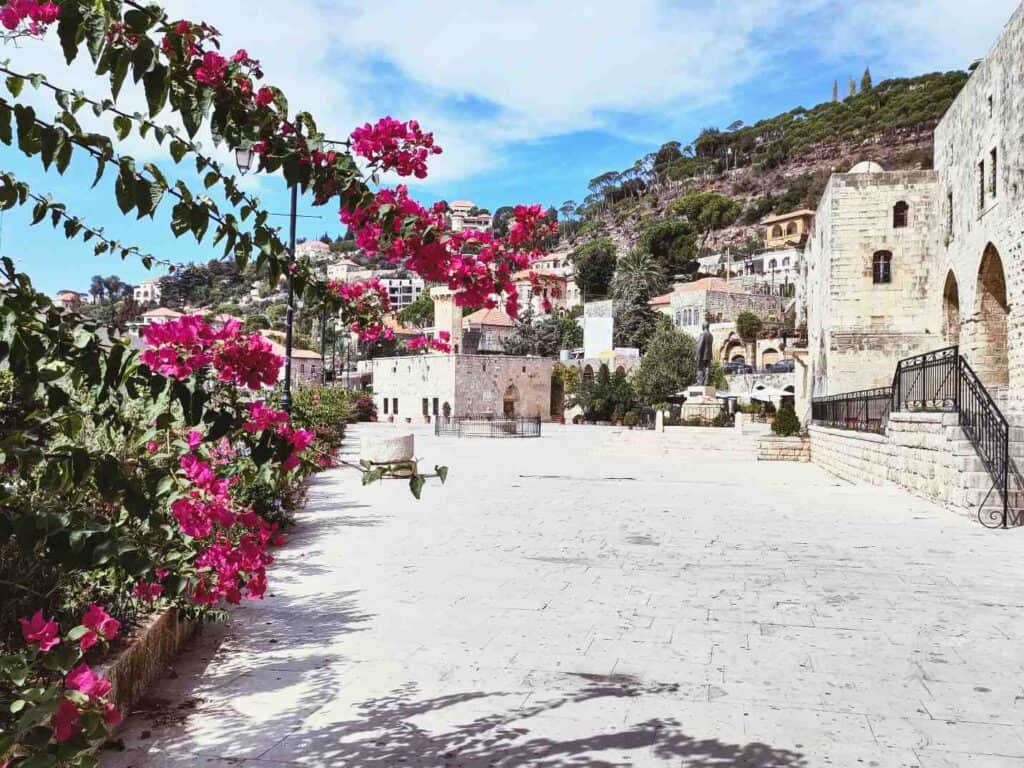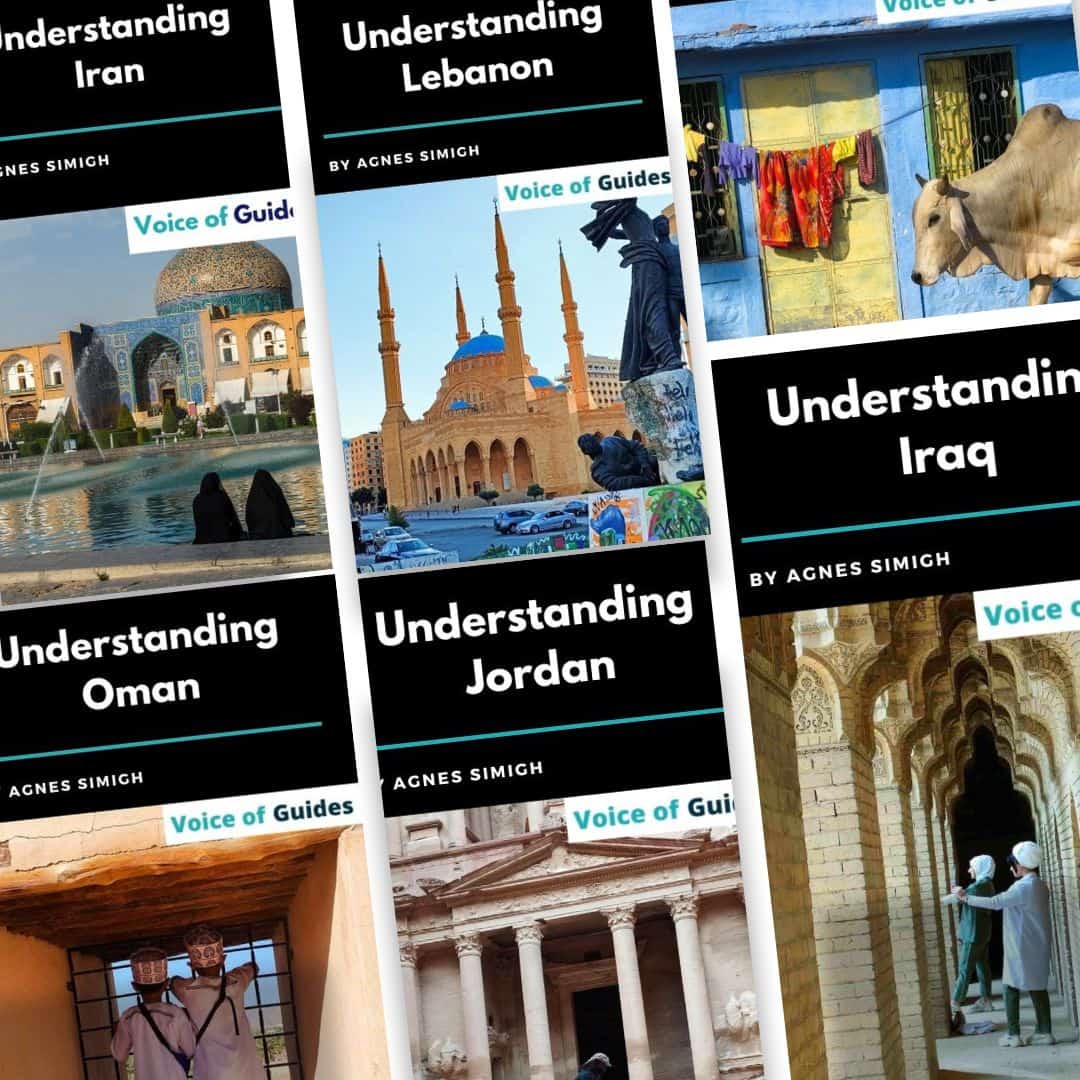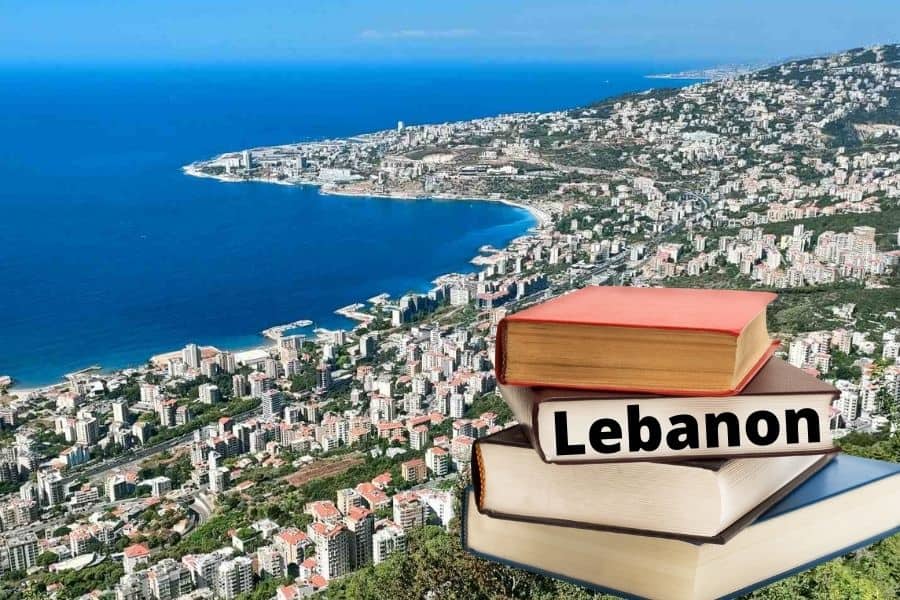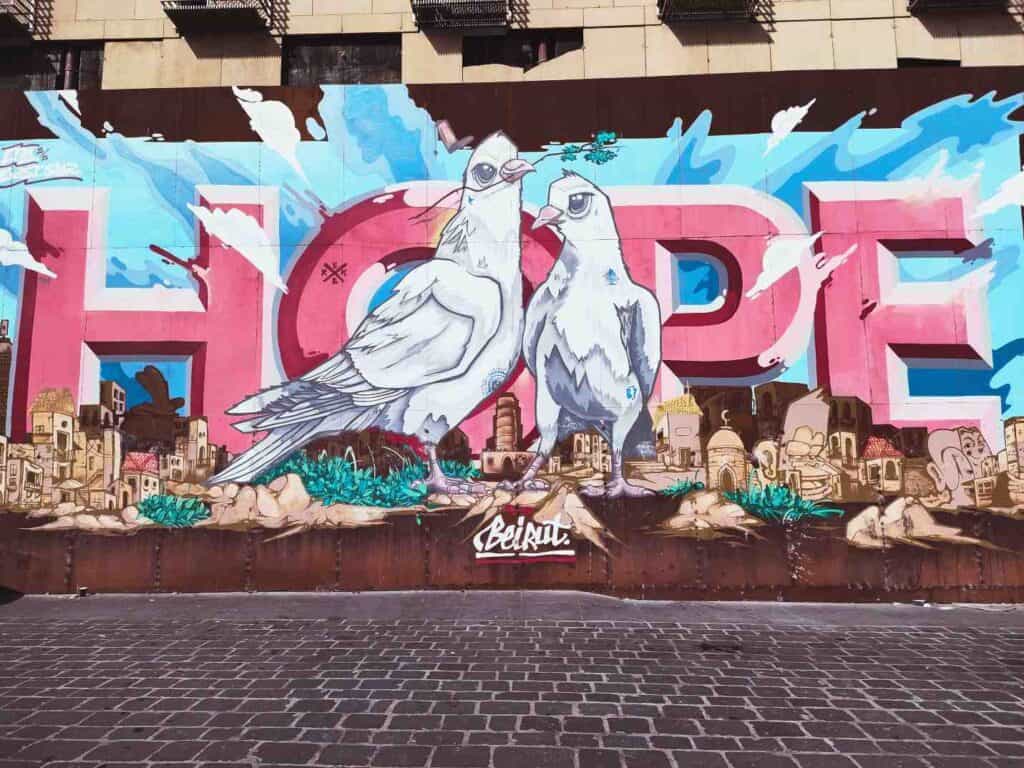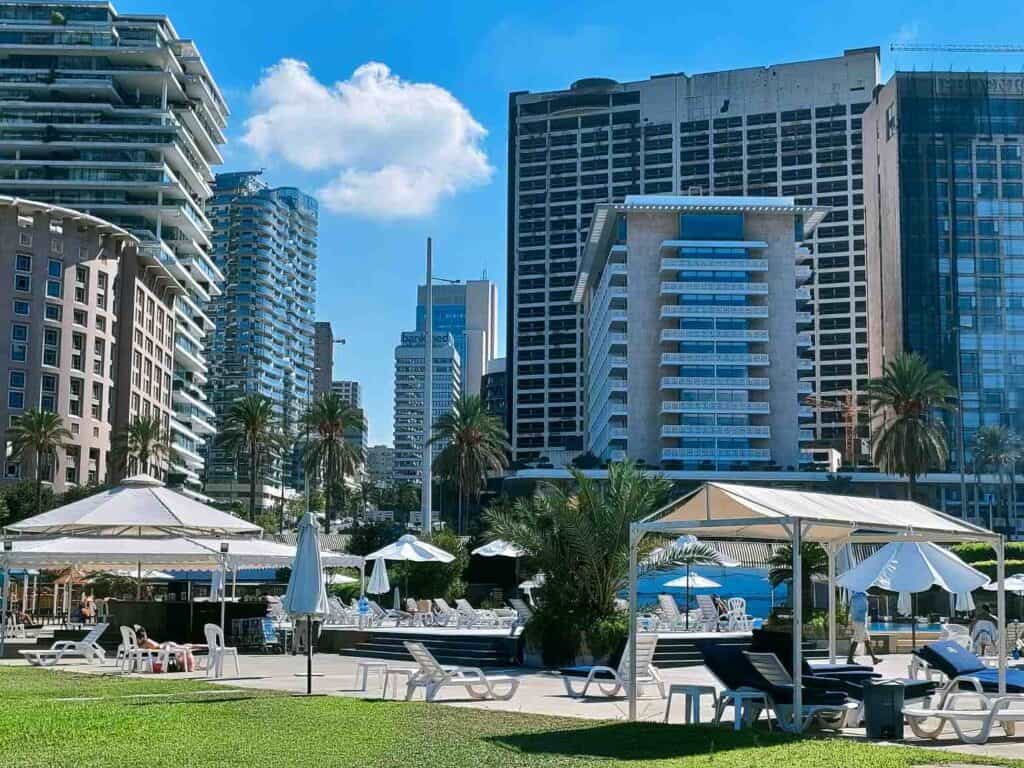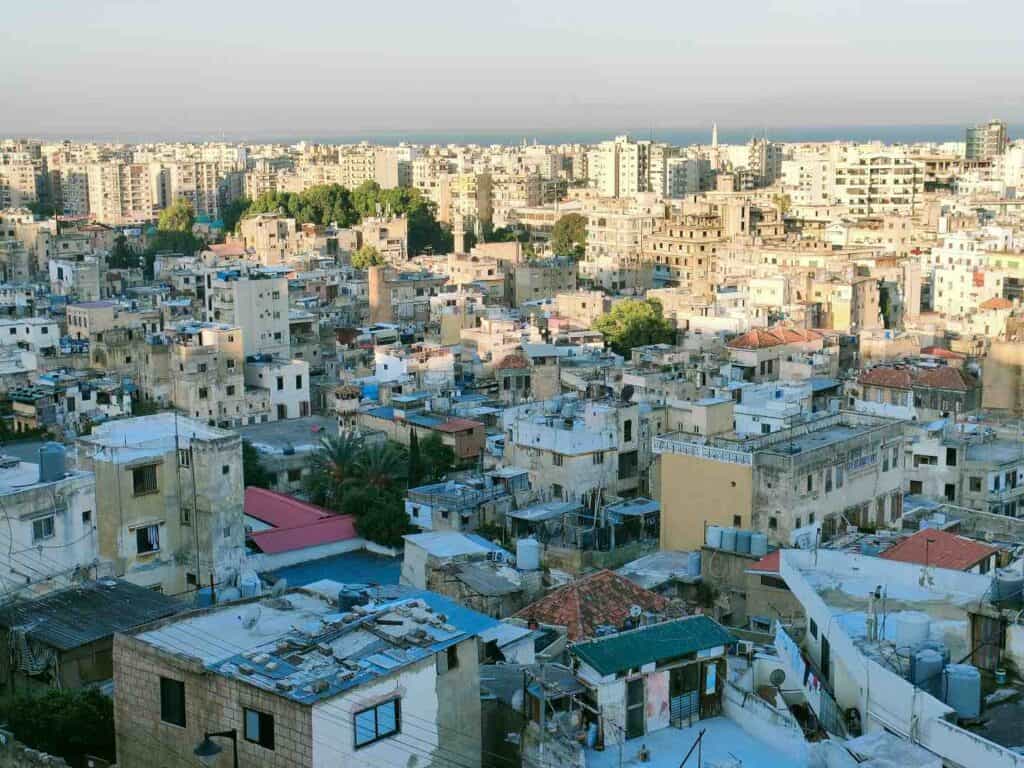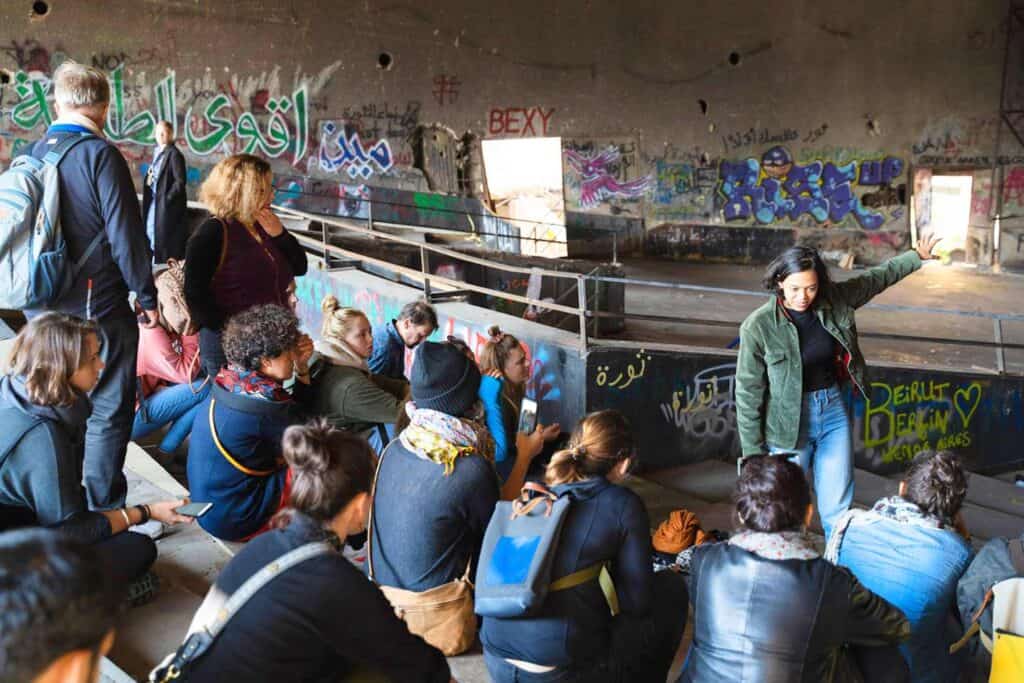This article may contain affiliate / compensated links. For full information, please see our disclaimer here.
This tiny country that you hardly spot on the map can quickly become your favorite destination in the Middle East. Lebanese people love their homeland, and all foreigners who set foot become fond of that and wish to return. This ultimate guide about the best places to visit in Lebanon in 10 days is probably the most comprehensive you can find right now. I’m an international tour guide, and I’m eager to share my tips and recommendations about the best things to do and places to visit in Lebanon in 10 days. However, if you have a shorter time, I also added an ideal itinerary on how to spend 5 days and 7 days in Lebanon.
“You can swim in the sea and ski on the same day”–the first thing you hear about Lebanon.
Before you continue, read my article about how it is to visit Lebanon in the middle of the crisis
It is because Mount Lebanon sharply rises from the coast and takes you quickly to high altitudes. Lebanon is as much about the small Christian and Druze mountain villages, monasteries as about reputed coastal cities, beach clubs, and bustling capital with the craziest nightlife of the Middle East. Besides, it is an important trade and intellectual center.
If I had to sum up the country in two words, I would come up with diversity and humanity.
This compact country can offer unique diversity in culture, religion, landscape, and cuisine. Despite the beautiful landscape and world heritage sites, the people and their hospitality are the main reason why everybody loves being here! This is the magic of Lebanon! Even amid the enormous hardships that Lebanese people must face because of the economic crisis, I encountered incredible hospitality.
The civil war destroyed several iconic buildings in Beirut and the countryside. What you see now is mostly the reconstructions of the 1990s. However, the bullet points and demolished buildings do not let us forget the bloody past.
- How many days do you need to visit Lebanon?
- When is the best time to go to Lebanon?
- The best way to get around Lebanon (public transport or car rental)
- Pin it for later!
- Where to change money?
- How much does it cost to travel to Lebanon?
- What to eat and drink in Lebanon?
- Have a local sim card
- The best itinerary for Lebanon in 5 days
- The best itinerary for Lebanon in 7 days
- The best itinerary to visit Lebanon in 10 days
- Day 1, 2 – Beirut
- Day 3–Jounieh, Jeita Grotto, Byblos, St. Charbel monastery, Baatara waterfall, Byblos
- Day 4 – Batroun, Mseilha fort, Tripoli (Trâblous)
- Day 5- Qadisha valley
- Day 6 – Deir al Qamar, Beiteddine, Cedar nature reserve
- Day 7 – Jezzine, lake Qaraoun, Anjar, Ksara
- Day 8 – Zahlé, Baalbek
- Day 9 – Sidon, Temple of Echmoun, Magdouche
- Day 10 – (Mleeta), Beaufort castle, Tyre
- Useful Lebanon travel resources
- Conclusion
- Other articles about Lebanon
- More articles about the Middle East
- More articles about Lebanon
How many days do you need to visit Lebanon?
You can visit many places in 5 days. But you can easily spend ten days or even two weeks in this small country. Two weeks is enough to go to every corner, and even relax a bit on the beach or in the mountains, but Lebanon will not let you be bored.
Read also the travel guide about the second biggest city of Lebanon, Tripoli
The below itinerary contains touristic and hidden, less known gems of the country as well.
When is the best time to go to Lebanon?
The summer months (June-September) are the liveliest in Lebanon, but prices also rise steeply. Beach clubs get full, and mountain villages are also packed with mid-and upper-class Lebanese escaping to higher altitudes. During this period, it is harder to find last-minute accommodation, and you should book in advance.
If you plan to blend cultural and nature travel, spring and autumn are the best times to travel to Lebanon. The weather is hot enough for swimming and pleasant for hiking. Outside the peak season, it is easier to find accommodation and rooms outside Beirut.
The best way to get around Lebanon (public transport or car rental)
Because of its small size, everything is reachable within a day from Beirut. It means that you can visit everything on a day trip from there, and it does not take more than two and a half hours to get from northern Tripoli to southern Tyre.
However, you can only fully immerse in the Lebanese culture if you also stay in other places. I highly recommend spending at least a night in Tripoli, the second biggest city of Lebanon, in Byblos or one of the mountain villages in the Chouf.
Public transport
You can easily get to the major cities along the coast with public transport with distant buses (Jounieh, Byblos, Barun, Tripoli, Sidon, Tyre) and Baalbek in the Bekaa valley via the Beirut-Damaskus highway. There are two bus terminals in Beirut that are more road junctions than proper bus station buildings: Cola intersection and Charles Helou bus station. You can take buses to the north from Charles Helou and from Cola to the south. There is also a third opportunity that is much less mentioned, the Dowra (Dora) roundabout near Bourj Hammoud, where you can take buses to Byblos, Jounieh, Batroun, Beit Mery, Broummana and Tripoli.
However, even from the Cola station, you can take a bus to the north, and Cola is often a better option. So, choose the one that is closer to your hotel. Buses leave when they have a couple of passengers; there is no specific timetable. But they are pretty frequent.
There are no official bus stations in the cities. You must get off along the highway and return to the same spot where you can wave the bus to continue to other towns along the coast. It works very well. I never had to wait more than 5 minutes.
However, in the countryside, public transport is not always the best option. They are pretty infrequent or non-existent, especially outside summer. Waiting until it gets full and switching several times can take a long time.
Pin it for later!
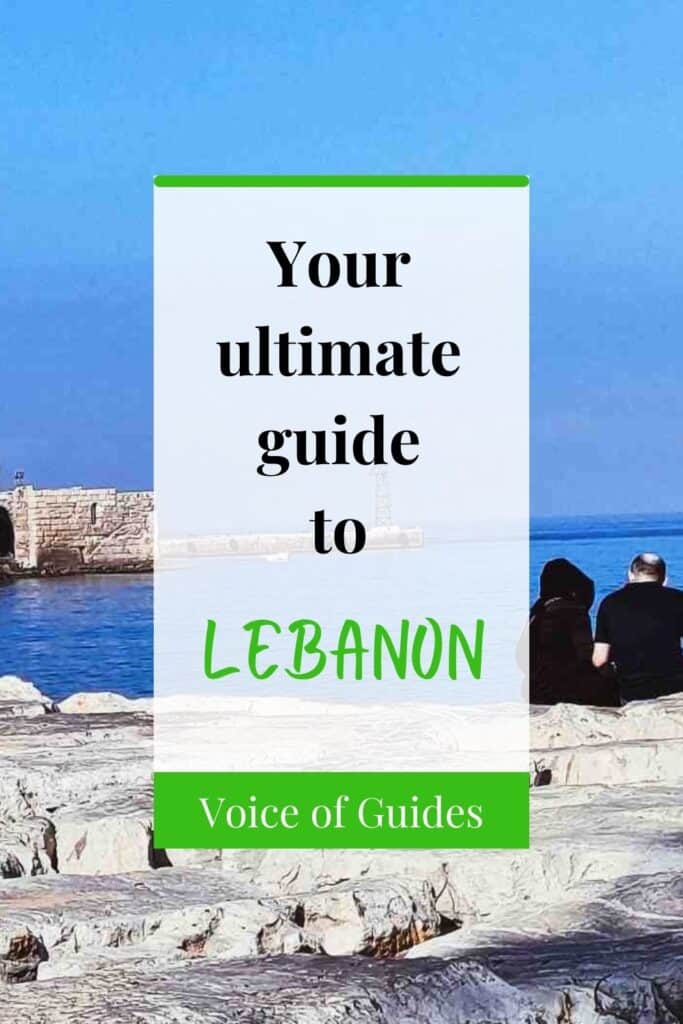
Renting a car or private taxi
Renting a car or a private taxi is a much better option for discovering the countryside.
If you rent a car for several days, the daily costs decrease significantly. One day can cost 35-40USD, two days 25 USD/day, and for a week around 15 USD/day. Not all companies offer car renting for a day.
When you drive your car, be careful on the road, as Lebanese ignore any traffic rules. Plus, with the lack of electricity, traffic lights are not working either.
Check out the prices for car rental in Lebanon here
Where to change money?
The local currency is the Lebanese Pound (LBP), but the American dollar (USD) is used parallel. They had pegged the Lebanese pound to the American dollar since the civil war with 1 USD equalling 1500 LBP.
However, the Lebanese pound devaluated by 90% during the last two years because of the severe economic crisis.
The exchange rate is unstable and changes daily. When I arrived on 4th October 2021, 1 USD was 17 200 LBP, and a few days later, it was 20 000 LBP. In October 2022, 1 USD already equals to 37600 LBP Thus, it is better to change only a small amount and later change more.
You can change money in one of the exchange offices for the actual black rate in Beirut or other cities. Locals also queue up to change the foreign currency (EUR, USD, British Pound) they receive from their family members abroad. There are plenty of exchange offices in the Hamra district along Rue de Hamra.
Read also the ultimate travel guide about the best places to visit in Beirut
How much does it cost to travel to Lebanon?
You should know that before the economic crisis Lebanon was not a cheap country at all. You could easily pay as much as in a Western country for accommodation, restaurants and going out at night. The high number of mid-and high-range accommodations also reflects that the government intended to attract the wealthy class.
However, things changed a lot in the last two years.
It costs 20-25 USD to rent a car for a day in Beirut. The fuel prices skyrocketed during the last months as the Lebanese government lifted the petrol subventions lately. During mid-October 2021, 30 liters of fuel costs 365 000 LBP.
Lebanon is one of the cheapest countries in the world right now (except for accommodation). The Lebanese pound (LBP) is in freefall and devaluated by 90% within only two years, making it one of the most affordable travel destinations. Lebanon is in the middle of an acute economic crisis, one of the biggest in world history.
Still, during the summer months, July-September, both flights and accommodation get more expensive.
Accommodation in Lebanon
Accommodation is still not very cheap in Lebanon; otherwise, hotels could not survive. There is much fewer low-budget hostel and hotel in the country.
One bed in a dormitory costs 20 USD, and the cheapest private rooms cost 25 USD. There are much more options if you have a bigger budget.
Check out the prices for accommodation
Public transport and taxis
A ticket costs 30-35 000 LBP to Tripoli, Tyre, and 15 000 LBP to the closer destinations.
Taking a “service” (shared) taxi costs 20 000 LBP to go to neighboring districts and 30-40 000 LBP to a more distant one in Beirut.
Eating out
Food is very cheap in Lebanon right now.
Popular street food, like falafel, manoushe: 16-19 000 LBP
A bottle of water: 3000LBP/ 6000LBP
A fresh fruit juice: 18 000/ 25 000LBP
Nargila (shisha): 25000–75 000LBP, depending on the place. Tripoli is usually cheaper than Byblos or Beirut.
Entrance fees
I will not mention the entrance fee for each tourist attraction. They all range from 4000 to 19000 LBP, so anywhere you go, you pay less than a dollar now. Many attractions are even free to visit.
How to plan your trip to Lebanon?
Flight: Check the best flight deals on Skyscanner.
Insurance: Safetywing is a cheap travel and medical insurance that also covers COVID-related issues.
Car rental: It is easy to get from Beirut to the main cities along the coast (Tripoli, Byblos, Sidon, Tyre) or to Baalbek. However, public transportation to the countryside is often scarce. I highly recommend renting a car when you discover the mountain region. Discover Cars offers great options to rent a car in Beirut.
Accomodation: Since not all hotels are listed on booking.com, I recommend checking out Hotellook that integrates other hotel platforms, thus proposing more options. It is especially useful when you look for accommodation in the countryside. Hostelworld is another good option for finding low-budget accommodation, but it only covers Beirut and Tripoli.
Local tours: Viator and GetYourGuide offer a wide range of cultural, nature, or food tours in Lebanon. Check out my favorite Alternative Tour Beirut as well.
What to eat and drink in Lebanon?
Lebanon is famous for having the best cuisines in the Middle East, and if you didn’t know, Lebanon is the birthplace of hummus. It is so diverse that different villages use different spices. Tripoli has an excellent reputation for food and sweets. In the coastal cities, you can always find some seaside restaurants. The Lebanese kitchen is a combination of Mediterranean and Arabic kitchens. Lebanese food is heavy, and sometimes I had no chance to eat more than once a day.
You do not need to take anything fancy, as simple street food is very delicious: falafel, shawarma, manoushe (topped with a unique blend of spices called za’atar. Try the one with cheese as well.
There are a wide variety of “Meze dishes”, that are different first courses: stuffed grape leaves, Tabbouleh (a type of salad), Sfeeha (meat pie), kibbeh, manakish (manoushe), Fattoush (salad), baba ganoush (eggplant dip), Fattoush (salad), Mutable.
As the main course, you can have lamb or chicken along with bread, hummus, and vegetables.
Lebanese sweets, as everywhere in the Middle East, are pretty sweet but incredibly delicious: baklava, layali lubnan, kanafeh.
I love eating more than knowing the recipes. I often grab something on the road without knowing the name so, if you want to know more about Lebanese food, check this informative page about that.
There is a big coffee culture in Lebanon, and you can have it at every corner.
Lebanon has a reputed wine industry, with the Bekaa Valley vineyards of Ksara and Kefraya.
The national drink of the Middle East and Lebanon is Arak, the Arab aniseed liqueur, while Almaza is a good-quality, light local beer.
Have a local sim card
Because of the lack of electricity and network interruptions, having mobile internet is a must. You cannot rely on an uninterrupted Wi-Fi connection now in Lebanon. Once you arrive in the city, you will see several phone shops to buy your sim card. It costs 10USD with 5GB of data usage that should be sufficient even if you stay for two weeks. You can charge an extra 5USD to have some credit for phone calls.
The best itinerary for Lebanon in 5 days
Day 1: Beirut
Day 2: Jounieh, Jeita grotto, Beirut half day
Day 3: Byblos, Batroun, Baatara waterfall
Day 4: Sidon, Tyre
Day 5: Ksara winery and Baalbek
4 nights in Beirut
The best itinerary for Lebanon in 7 days
Day 1, 2: Beirut
Day 3: Jounieh, Jeita grotto, Byblos, half-day Beirut
Day 4: Batroun, Tripoli
Day 5: Sidon, Tyre
Day 6: Anjar, Ksara, Baalbek
Day 7: Deir al Qamar, Beiteddine, Cedar Nature reserve
6 nights in Beirut
The best itinerary to visit Lebanon in 10 days
Day 1,2 – Beirut
2 nights in Beirut
Day 3–Jounieh, Jeita Grotto, St. Charbel monastery, Baatara waterfall, Byblos
1 night in Byblos
Day 4 – Batroun, Tripoli (Trâblous)
1 night in Tripoli
Day 5- Qadisha valley
1 night in Qadisha valley or in Beirut
Day 6 – Deir al Qamar, Beiteddine, Cedar nature reserve
1 night in the Chouf or Jezzine
Day 7 – Jezzine, lake Qaraoun, Anjar, Ksara
1 night in Baalbek
Day 8 – Zahlé, Baalbek
1 night in Baalbek
Day 9 – Sidon, Temple of Echmoun, Magdouche
1 night in Sidon
Day 10 – (Mleeta), Beaufort castle, Tyre
Back to Beirut
Day 1, 2 – Beirut
Beirut is not a one-day city. It takes time to discover each district, and you can enjoy the restaurants and nightlife as well. There are no world-famous attractions, and still, Beirut with its diverse architecture and history has a lot to offer: museums, mosques including the iconic Amin mosque, the famous pigeon rocks in Raouche, the modern downtown of Beirut, the historic American University, the famous bars and a lot more.
Read the ultimate guide about Beirut here
Go for one of the Alternative Tours in Beirut to understand more about its recent history and current problems
Day 3–Jounieh, Jeita Grotto, Byblos, St. Charbel monastery, Baatara waterfall, Byblos
Have a day trip to Jounieh and Jeita grotto, the most famous natural attractions of the country, and visit historic Byblos.
The cable car goes up to Harissa on the top, where the white-painted statue of Our Lady of Lebanon (Notre Dame du Liban) stands.
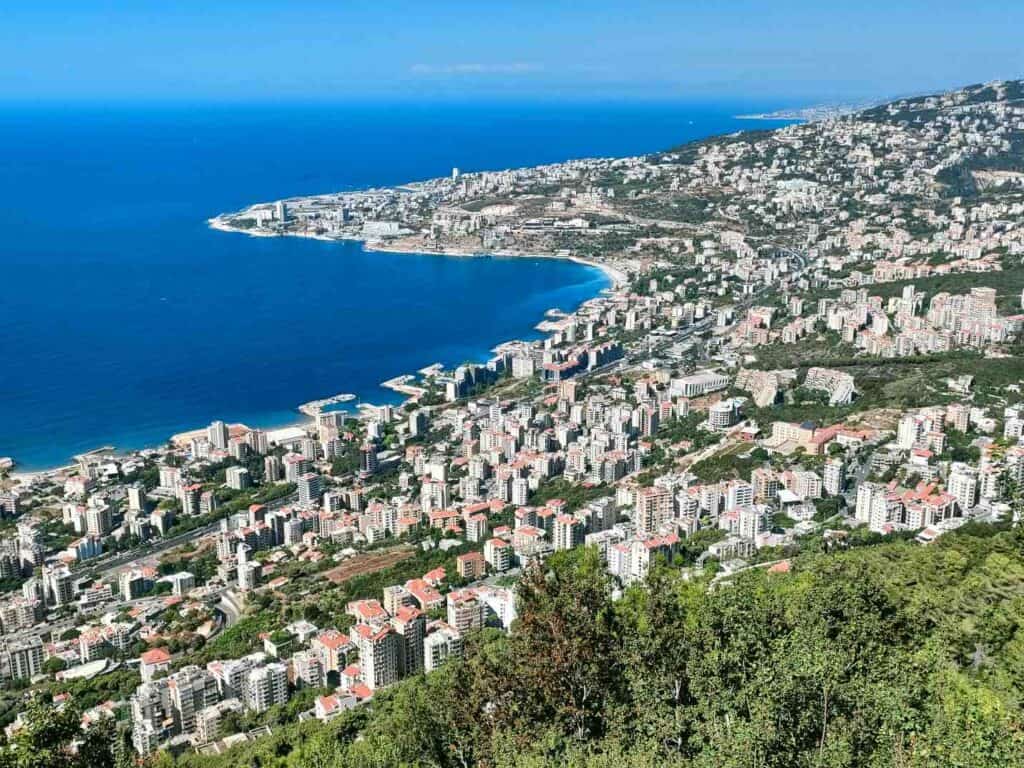
Pilgrims come to pray in the small church on the top, while tourists arrive to enjoy the fantastic view of the Mediterranean Sea. The site is important to both Christians and Muslims since Muslims equally respect Jesus and Mary, as stated in the Qur’an.
The melancholic music that welcomes you on the top immediately puts you in an emotional state. There is a pleasant restaurant on the top as well if you want to stay longer.
Enjoying the view from the top at Jounieh is one of the best things to do in Lebanon.
Apart from that, Jounieh is a fancy summer resort with a casino, which primarily attracts the wealthy tourists of the Gulf countries, with not much to see. It was one reason why Lebanon was dubbed as the “playground of the Middle East”. The lavish multimillion-dollar project was opened in 1959 and attracted the Middle Eastern bourgeois. Wisely, the gaming activity remained banned in the rest of the country. The Casino of Liban quickly became one of the most prestigious casinos in the world.
Jounieh is also a favorite for adventure lovers to do paragliding. During the civil war, the Maronite Christian communities used to escape the cruelty of the war and get some fun in Jounieh, a mainly Christian settlement.
Book your paragliding experience here
How to go to Jounieh?
You can quickly get from Beirut (Cola station) to Jounieh with public transportation. Tell the driver where you want to go, and he will stop along the highway. From here, it is only a short walk down to catch the cable car.
With an endless series of stalactites and stalagmites, the Jeita Grotto is one of the most beautiful places in Lebanon and one of the world’s biggest of such cave systems. A small train takes you down to the first cave entrance, and then you continue to the second one, where you take a boat tour. I have been to similar caves in Europe before; however, it surpassed all my expectations.
The best way to get to the cave is to take a cab from Beirut or Jounieh. The driver can even wait for you and take you back to the city after.
How to go to Jeita grotto from Jounieh?
Jeita is off the main coastal road, which makes it more challenging to approach. However, it is a short 20 minutes ride, and you can negotiate a price with the driver.
Enjoy the fantastic mountain landscape of Lebanon, taking the mountain road from Byblos.
Visit one of Lebanon’s most important pilgrimage sites, the St. Charbel monastery in Annaya, where Christians and Muslims flock in masses. Several miraculous healings were reported, where the hermit and monk, St. Charbel Makhlouf spent most of his life in the 19th century. It accepts millions of visitors yearly to pray at the tomb of the hermit and monk, visit the church and a small museum containing his relics and documentation of his life.
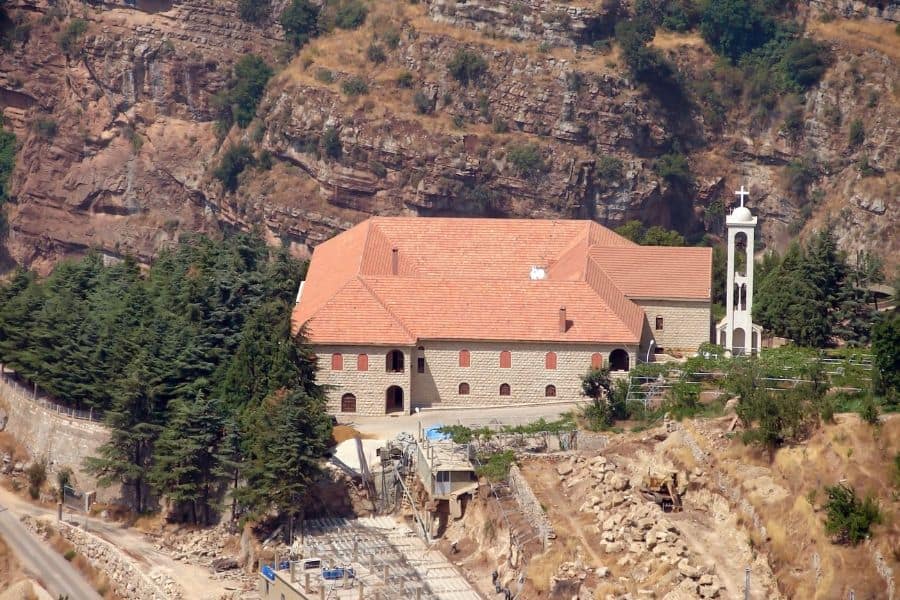
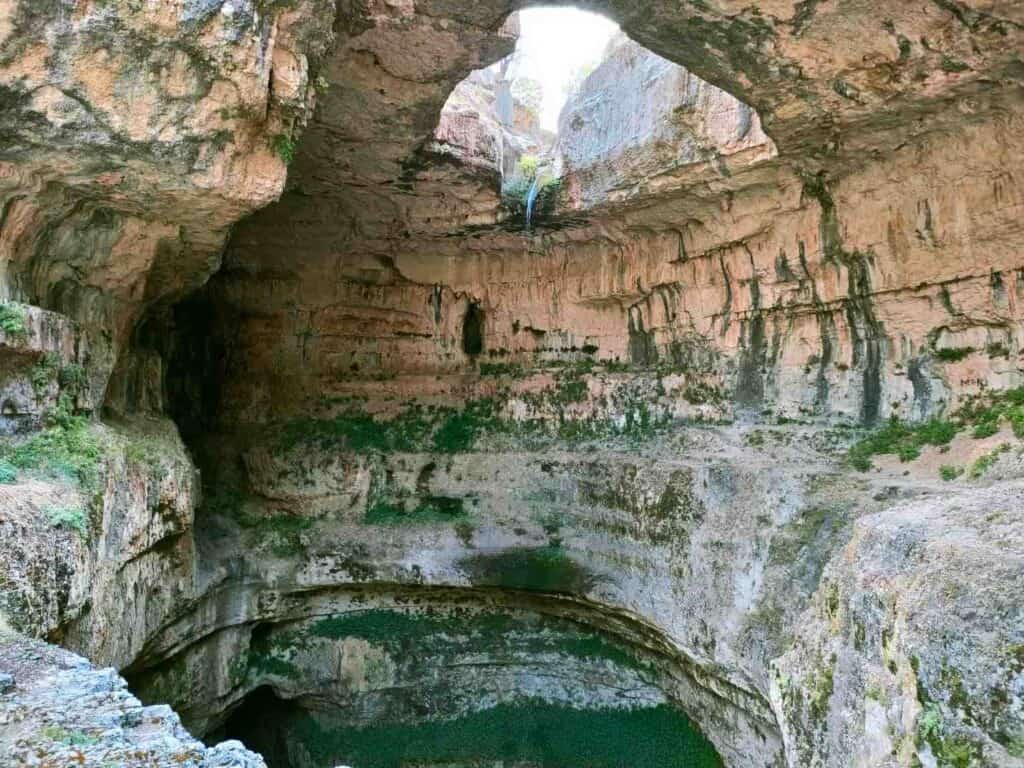
Continue to the Tannourine region, where the Baatara waterfall, also called “the Cave of the Three Bridges,” stands with a sinkhole. Although I was there in the dry season when there was not much water, it was still amazing. If you go in November, a 250-meter-high waterfall makes it even more memorable. There is a small entrance fee to take the path to the view platform.
Return to Byblos (locals know it as Jbail), the ancient Phoenician port city now the center of nightlife with the best-preserved souk (bazaar) and ancient history, and one of the must-see cities of Lebanon. Byblos is one of the oldest inhabited settlements in the world with a history of 2500 years. Its name comes from the Greek “bublos” and has been the main Phoenician port to deliver papyrus between Greece and Egypt.
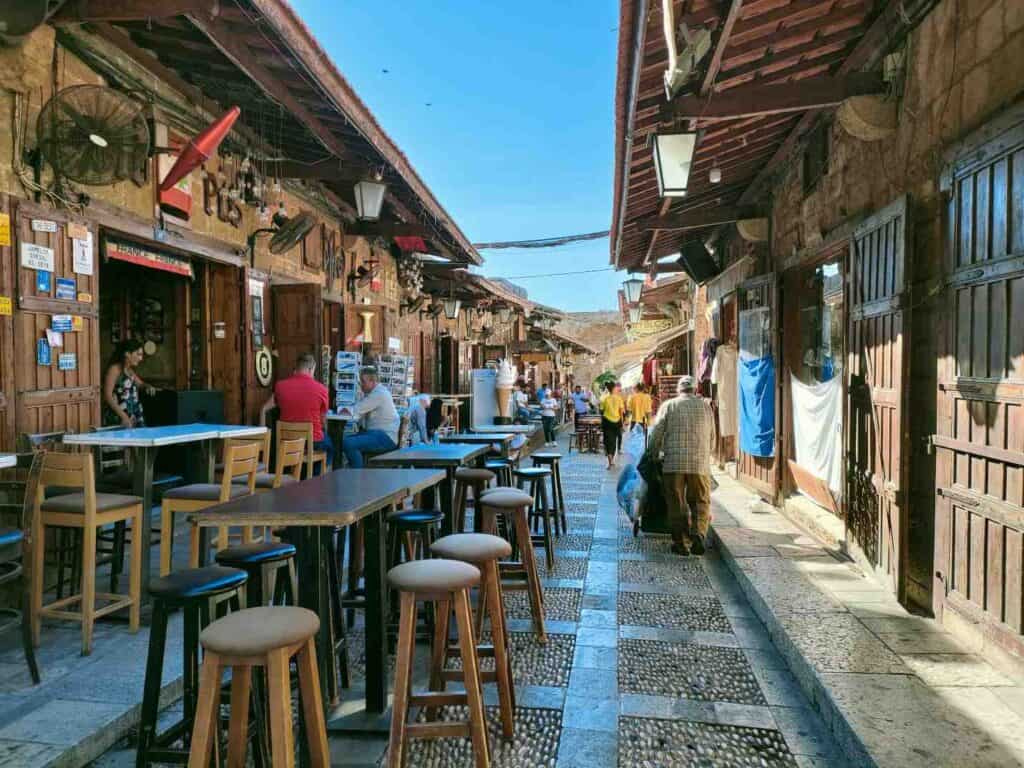
In the 1960s, when Beirut was called the “Paris of the Middle East”, the hub of nightlife, prominent persons flocked to Byblos. The archeological site is the most important attraction of Byblos that you can access through the Crusader castle with the Phoenician ruins of the Temple of Baalat Gebal, the temple of Resheph, the Temple of the Obelisks, the king’s well, a Roman theater, and royal tombs. The public beach of Byblos is only a short walk from the archeological site.
Stroll around the fishing harbor and visit the Fishing club of Pepe, which needs no introduction in Byblos. His famous bar opened in 1963 and became famous for its legendary parties that attracted international celebrities such as Marlon Brando, Sophia Loren, Brigitte Bardot, Mick Jagger, and David Rockefeller. It has a photo collection of the famous visitors of Pepe Abed. The restaurant is still a popular spot to have dinner.
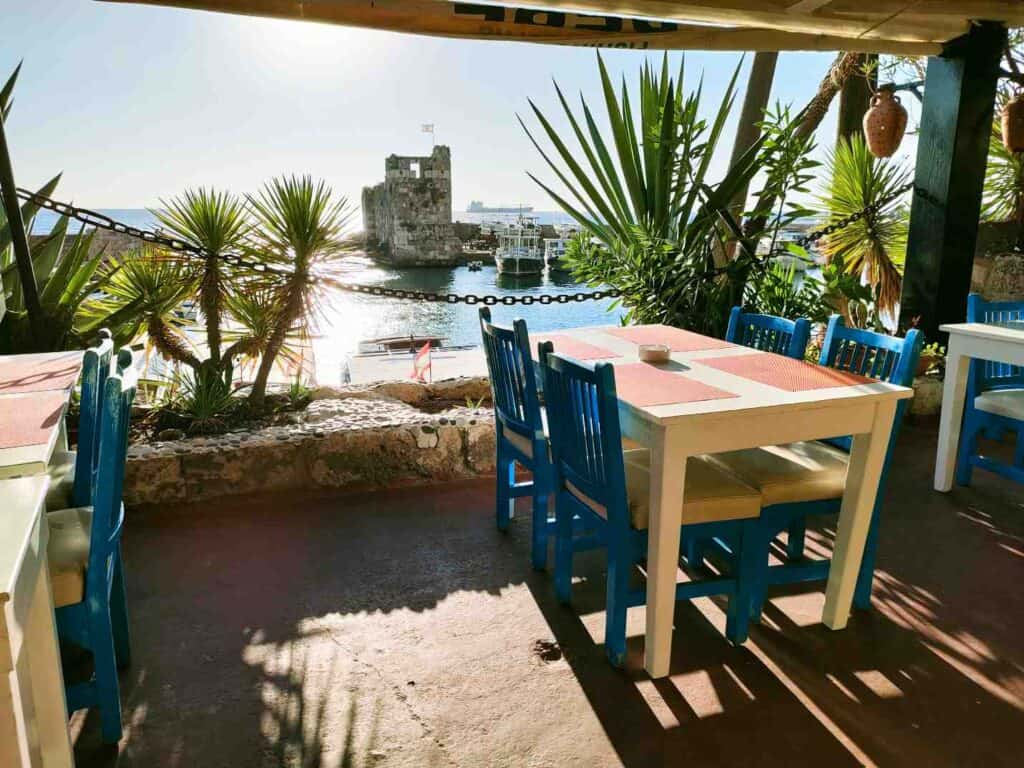
When walking around Byblos, it is worth visiting the Romanesque church of St John the baptist.
There is one unique exhibition and shop in a side street of the bazaar, called Memoire du Temps, featured by BBC. Pierre Abi-Saad’s fish fossil collections contain a range of extinct fish or have never been named at all. He found thousands of fossils in the family’s private quarry at 800 meters above sea level.
It is nice to stay in Byblos for the evening and night when it gets busy with locals.
However, you can easily return to Beirut as well.
How to go to Byblos?
Located along the coast, as mentioned before, you catch a bus along the highway and get off when you reach Byblos. From there, it is only a short descent to downtown.
Where to stay in Byblos?
Byblos, like many other places in Lebanon, is scarce in low-budget accommodations.
The guesthouse of the famous Fishing Boat Club in the harbor offers private rooms for 30 USD. For some reasons, you cannot book it online, but you can pass by and ask if they have a room available.
Another good affordable option close to the center are:
– Byblos comfort hotel (3 star)
– Aleph Boutique hotel (4 star)
– Byblos Sur Mer (5 star)
– Ahiram Hotel Byblos (3 star)
There are plenty of options some kilometers from the center along the beach.
Day 4 – Batroun, Mseilha fort, Tripoli (Trâblous)
Continue to the north along the coast and visit Batroun, the lovely coastal city that is a must-stop on the way to Tripoli.
You will definitely notice that several stalls sell lemonade, a refreshing local beverage in the summer heat. It contains a bit more sugar than I prefer, but you can taste it first before buying it. Stroll around the souk of Batroun with Ottoman-era buildings and the fishing port dominated by the St. George orthodox church.
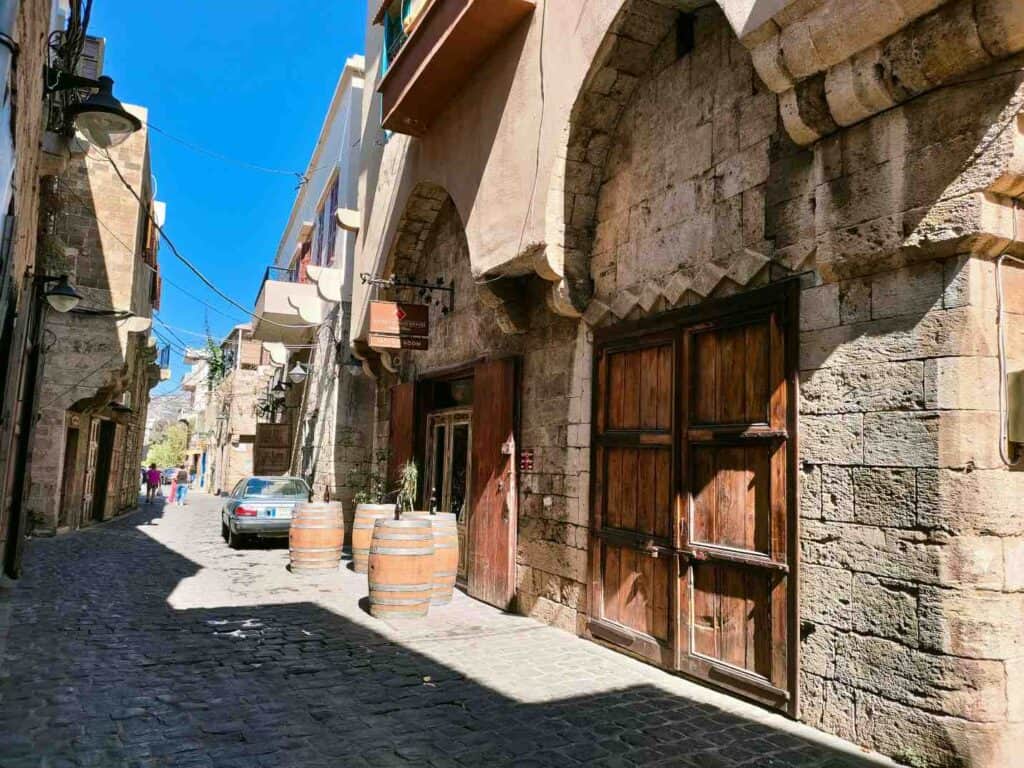
If you want to enjoy the beach, go to the White beach located 5 km from Batroun with a white sand beach and pleasant cafes. It is also an ideal place for windsurfing.
Continue your trip to Tripoli and stay there for at least two nights.
Only a few kilometers from Batroun, you can make a quick stop at the Mseilha fort built approximately 400 years ago to control the road between Beirut and Tripoli. The fort stands on a cliff and overlooks the valley.
Continue to the northernmost city of Tripoli and discover its old town with the bustling souk, hammams, khans, and mosques from the Mamluk time, enjoy the panorama from the citadel, taste some local specialties, go to the Old train station and finish your day on the Corniche. Many tourists refrain from heading to Tripoli because of its bad image. Despite the rumors, the conservative Muslim city, has its charm and can easily become a highlight of your trip to Lebanon. Tripoli was one of my favorite places to visit in Lebanon.
Read this travel guide about the best places to visit in Tripoli
How to go to Batroun?
Like all the cities along the coast, Batroun is easily reachable with public transport.
How to go to Tripoli?
Wave the van along the highway to Tripoli and get off in the big roundabout with “Allah” written with Arabic calligraphy.
Where to stay in Tripoli?
The only low-budget option in Tripoli is the Seed hostel next to the souk and close to the bazaar. Nazi, the manager, is extremely helpful and provides you with all the information about Tripoli’s best places to visit. He speaks perfect English. Rooms cost 20 USD/night with a shared bathroom. It is the best option if you are on a lower budget in Tripoli.
Beit el Nassim: a mid-range guesthouse in Al-Mina with a unique atmosphere and rooms, each having different names and decoration, is local’s favorite and a top choice to stay at in Tripoli.
Day 5- Qadisha valley
Many say that the Qadisha valley is one of the most beautiful places to visit in Lebanon. The valley and the surrounding mountains with the river of the same name carving way in its bottom are stunning. Chekka is where you leave the coastal road to take the serpentines inside the Qadisha gorge.
The valley is a World Heritage and is one place where you can still spot cedars, the most valuable wood of ancient times and the national symbol of Libanon. Some trees can be a couple of thousand years old. Near the reserve is the Cedars Ski Resort, the oldest ski resort in Lebanon.
You find more information about skiing in Lebanon here: https://www.cntravellerme.com/destinations/middle-east/lebanon/the-ultimate-guide-to-skiing-in-lebanon
The valley has been a Maronite Christian bastion since the 5th century, dotted with rock-cut monasteries. The only way to discover these monasteries is to hike in the valley bed. There are several caves in the valley where hermits and nuns retreated. The monasteries carved in the cliff with hundreds of years old frescos are the hidden gems of Lebanon.
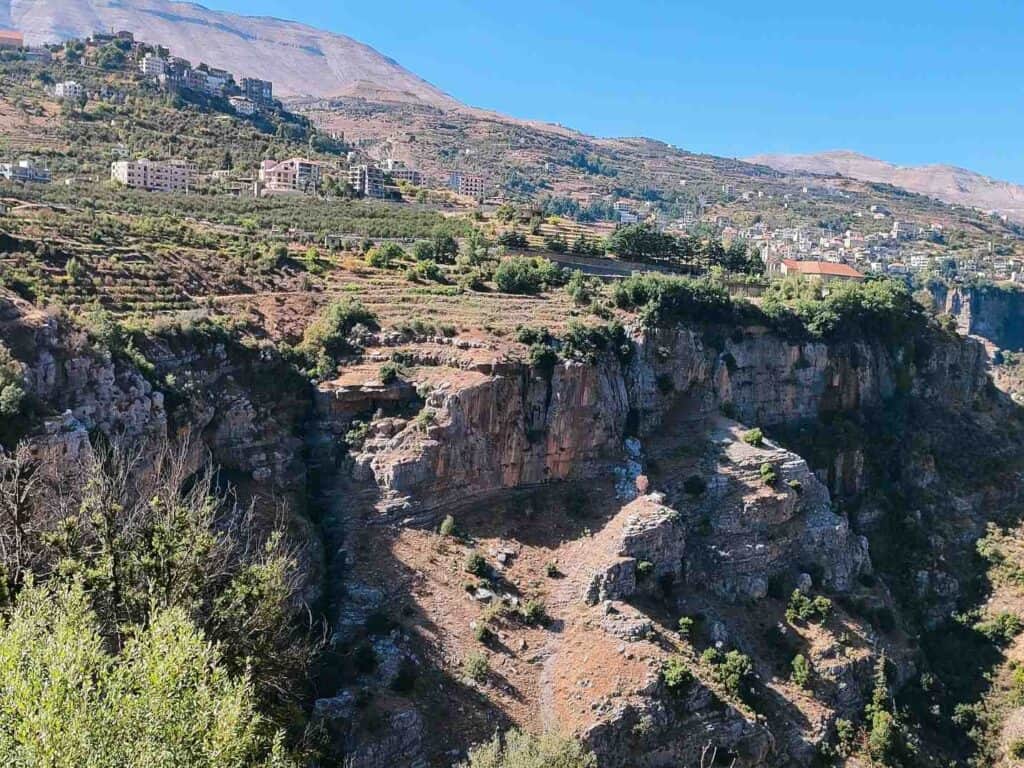
The Qadisha valley is part of the over 400 km long Lebanese Mountain Trail that connects the north of Lebanon to the south.
If you are interested in longer hiking trails, check out all the valuable information about accommodation and a local guide at Lebanontrail.org.
The most beautiful part of the valley is the 20 km long stretch between Bcharré and Tourza. If you start early morning, you can complete the trail back and forth the same day.
Bcharré is the biggest city in the Qadisha valley, perched on the top of the cliff. Lebanon’s most famous poet and philosopher, whom everyone can quote, was born here. Visit the Gibran Khalil Museum honoring the literary hero. His most famous book was “The Prophet” in 1923, and he was one of the most-read writers in the world. He lived most of his life in America, but they transferred his body back to Bcharré after his death, where the museum stands. His most quoted poem is “On your Lebanon and mine”.
You can hike the Qadisha valley floor by taking a trail starting from behind the St. Saba church of the main square of Bcharré. However, the path is quite steep and slippery. If you would rather avoid such adventures, then drive directly down to the valley bed. Also, if you have only one day to spend in Qadisha and want to complete it until Tourza or Deir Mar Antonios Qozhaya back and forth, you had better not waste time with the descent from Bcharré. If you are not in good shape to complete hours of hiking, you can still find other Christian monasteries in Lebanon accessible by car.
I completed the Bcharré – Der Qannoubin within 4-5 hours.
You can visit a couple of monasteries while hiking, some of them being right along the trail, while others require some extra hike. The problem is that the indications are not clear when you have to turn from the main train. Ask other hikers or priests on the way to make sure you do not miss the climb to some monasteries.
The one you cannot miss is the first as you start the hike in the valley bed, called the Deir Mar Elisha monastery. The Lebanese Maronite Order was founded here in 1695, although the monastery itself is much older.
Chapel Mar Chmouni and Deir as- Salib are not along the main hiking trail, but you must take a steep path to the right opposite the spring on the left side. You only later find boards that show you are in the right direction. When I was there, they were closed however it is still possible to climb and have a look from outside. You can also reach both monasteries from Hadchit, taking a steep path down.
Deir Qannoubin is easily reachable following the valley bed in approximately 2 hours from Deir Mar Elisha. The church is built into the rock and the chapel of Mar Marina is right next to that where the remains of 17 Maronite patriarchs are buried.
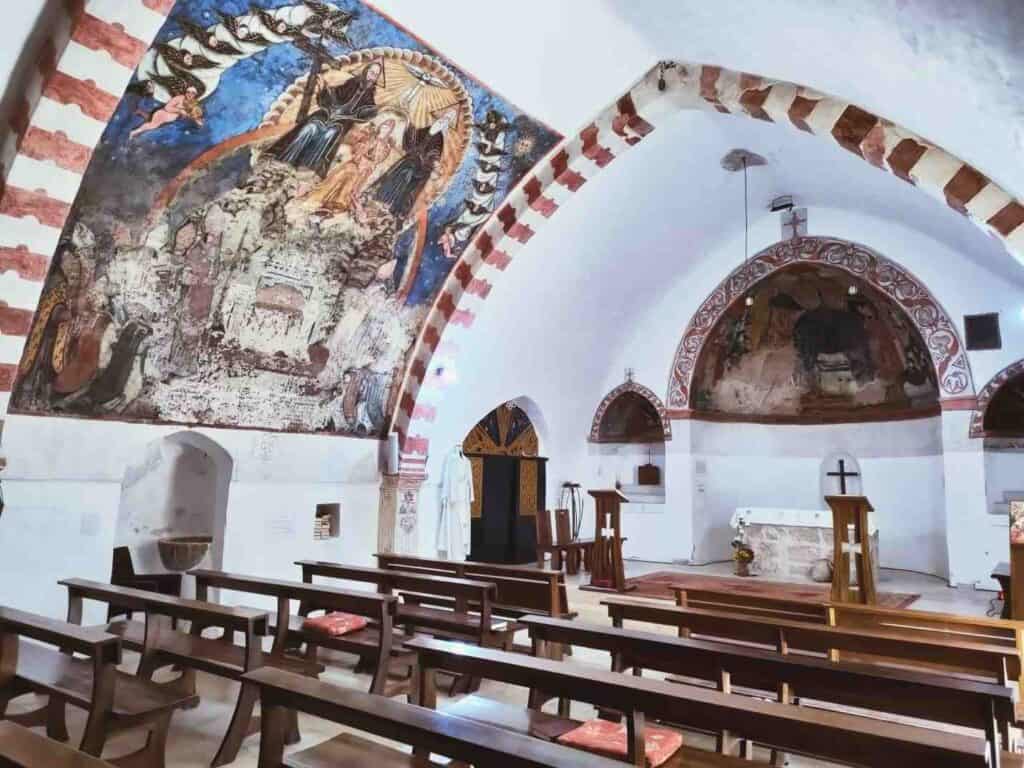
You can continue to Deir Saydet Hawka, a small monastery believed to date to the 13th century. It has a chapel and a few monk’s cells in the cave. It is also reachable from the top from Hawke in half an hour.
The last famous monastery along the valley floor is Deir Mar Antonios Qozhaya, the largest hermitage and has been in use without interruption since the 11th century. It is a well-known pilgrimage site. The grotto of St. Anthony next to the entrance was used to chain those possessed with the devil, hoping that the saint could cure the insane.
One monastery, called Deir Mar Semaan stands separately, and not in the valley. The hermitage carved into the rock is where Mar Samaan (St Simon) supposedly lived. The monastery is indicated along the main road heading to Bcharré from the direction of Diman.
How to go to the Qadisha valley?
There is a public van from 8 am departing from Tripoli. In the morning, they leave every half an hour, later every hour. However, if you use public transport, you are bound to the timetable. The last van departs from Bcharré to Tripoli at 3:30 pm. If you miss that, there are only a few options to stay in Bcharré.
The best way to discover the Qadisha valley is to rent a car. You gain tons of time, and you can make several extra stops wherever you want for the fantastic view.
There are also organized tours from Beirut that include the Gibran Khalil museum in Bcharre, a hike in the Cedar of God reserve, and the visit to the Deir Mar Elisha monastery. Check the tour here.
Check out the prices to rent a car
Where to sleep in the Qadisha valley?
Although accommodation is not abundant in the Qadisha valley, you can still find some mountain resorts and apartments if you have a bigger budget, which is the best way to enjoy the landscape. Most accommodations are in Bcharré, the Cedars, or the summer resort, Ehden.
Tiger house Guesthouse– the cheapest option in Bcharré.
Stone cellars in Douma – upper-range hotel
The Ranch – Lodge & Equestrian Center – Mid-range in Kfar Hazir (close to Chekka)
It is hard to get accommodation in the summer months if you don’t book it in advance, so it is better to return to Tripoli.
Day 6 – Deir al Qamar, Beiteddine, Cedar nature reserve
Head to the Chouf in the mountains, the traditional base of the Druze community that is one of the most beautiful places to visit in Lebanon. Fakhreddine, the Druze national hero, united Mount Lebanon and the coastal regions that became the forerunner of modern Lebanon. The Ottoman governor modernized the county, and the economy flourished under his rule. Later, the growing independence of the vassal state made the Ottoman anxious, and he was later executed.
Villages are the soul of Lebanon. If you only visit the cities, you will not get a full grasp of Lebanon.
Take the steep serpentines up to the barren stony mountains and immerse in the beautiful nature. Villages are lively during summer when mid-class and wealthy Lebanese people escape to the mountains to get some fresh air. In the low season (October- April), villages are still charming but much calmer and you have a better chance to find accommodation for a lower price.
Deir al Qamar is one of the must-see villages of Lebanon. All the attractions are around the main square: Mosque of Emir Fakhreddine Maan built-in Mamluk style, the former governor’s palace, the silk khan, and the palace of Fakhreddine, the former Druze leader.
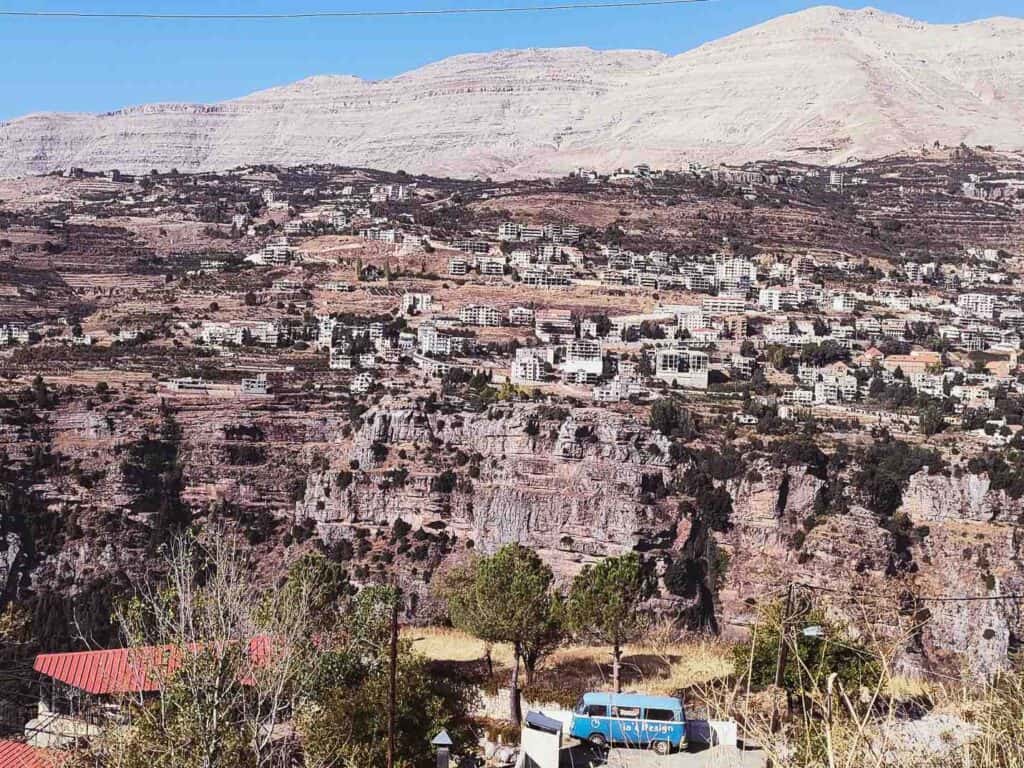
How to go to Deir al Qamar and Beiteddine?
You can take a service taxi from Beirut Cola station to Beiteddine and get off on the way at Deir al-Qamar. However, the best way to discover the Chouf mountains is to rent a car to stop at some viewpoints.
Check out the car rental options
Beiteddine is a short drive from Deir al Qamar and is famous for the palace of Emir Bashir, the Ottoman delegated governor. The Beiteddine palace has a mixed Arabic and Italian architecture with an extensive outer courtyard and inner park. It has a striking location overlooking the valley. The historical monument was severely demolished during the Israeli invasion, and the Druze leader, Walid Jumblatt, undertook its restoration, declaring it the “Palace of People.” The palace has nicely decorated rooms with mosaics with Oriental-style furnishing, elegant mirror decoration, mosaics, and fountains.
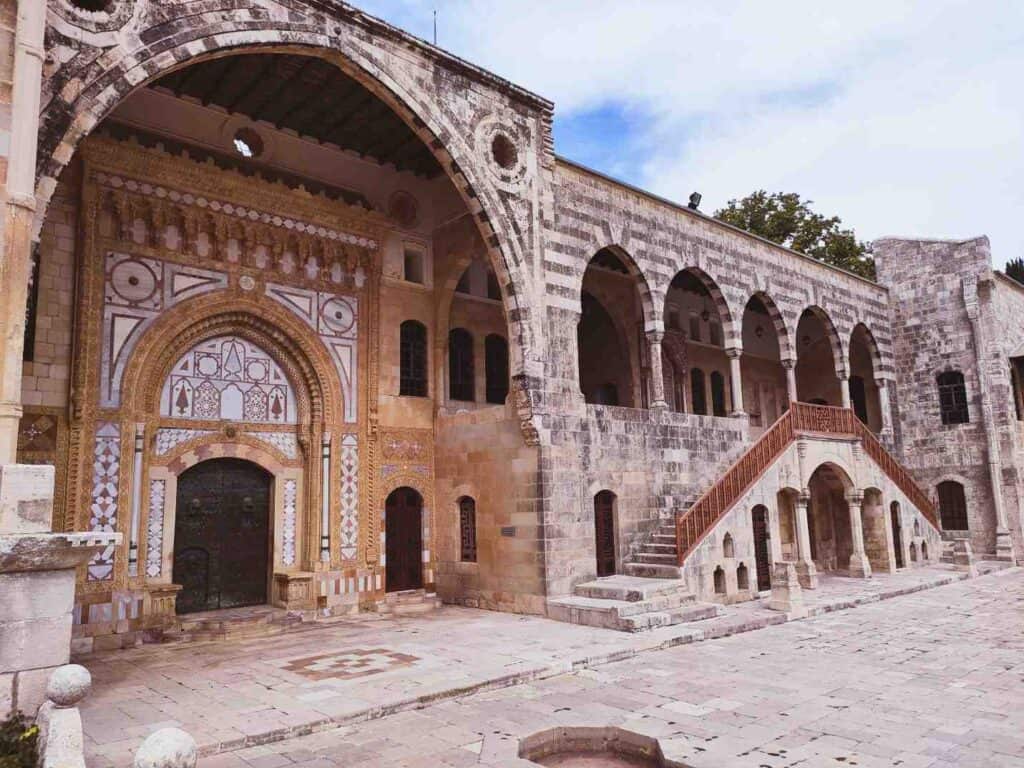
If you have the chance, stay in the Chouf for the night or Jezzine. It is a mountain town and easily reachable from the Chouf.
Continue to the Chouf Cedar Reserve (entrance fee 10 USD/200 000 LBP) and enjoy walking among the famous Lebanese Cedar trees. You can choose a shorter or longer hiking path, some inside the forest, others are more scenic but you will definitely like. A local guide is available at the entrance for 200 000 LBP/10 USD if you need some guidance. This is the most extensive cedar forest of Lebanon, representing 5% of the country. Once cedar was abundant in the region and was a source of wealth for the country. Hiking in the Cedar Forest is one of the best nature programs in Lebanon.
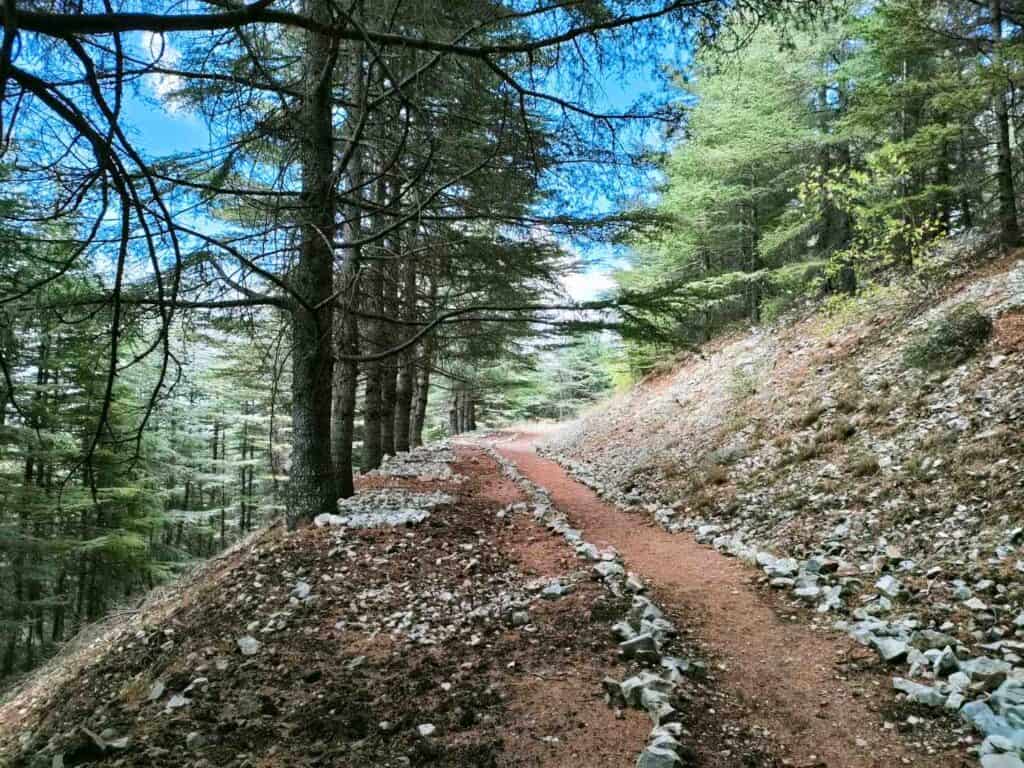
Jezzine, the famous summer resort of the south, lies at the edge of the cliff with a stunning 40-meter-high waterfall that is more spectacular in the rainy season. Take the narrow path from the main road that leads to the feet of the waterfall. Apart from that, Jezzine has a small city center with restaurants and bars.
Where to stay in Deir al Qamar?
Bkerzay – Mid-range hotel with amazing location and a cozy interior
Deir al Oumara–mid-range hotel
Where to stay in Beiteddine?
Mir Amin palace – a hotel with a top location overlooking the Beiteddine hotel. It is the former palace of Emir Bashir’s son converted into a high-end hotel. Have a drink on the terrace even if you are not staying for the night.
Where to stay in Jezzine?
The most popular budget options in Jezzine are:
Day 7 – Jezzine, lake Qaraoun, Anjar, Ksara
Take the road to the Bekaa valley along the artificial Qaraoun lake. There is a pleasant restaurant with a superb view to stop for lunch.
Baalbek occupies a plateau between Mount Lebanon and Anti-Lebanon mountain ranges.
The Bekaa Valley is a Shiite majority region, a strategic headquarter of Hezbollah, and extensive cannabis growing area.
Hezbollah’s yellow flag, the images, and cardboards along the road depict Iranian clerics, including Ayatollah Khomeini, Ali Khamenei, or Hassan Nasrallah.
You must know Hassan Nasrallah’s name, who often shows up on media addressing his followers. He has been the leader and voice of Hezbollah since 1992. He openly threatens Israel with retaliation in case it attacks Lebanon. The United States of America, the United Kingdom, Germany, the Arab League, and Israel consider Hezbollah as a terrorist organization in its entirety. In contrast, the EU listed only its military wing as such. Hezbollah has a big grasp on Lebanon’s life and is a member of the Parliament as a political party.
The Bekaa valley was insecure during the Israeli-Hezbollah conflict of 2006. However, by now, it is one of the most beautiful places to visit in Lebanon. At the same time, it is one of the poorest regions that pushes many people to produce hashish as a means of survival.
It is also where you can taste the famous Lebanese wine in a famous wine cellar and learn about the history of one of the world’s oldest winemakers.
Continue to Anjar, the “Armenian city” founded by Armenian refugees after the genocide of 1915.
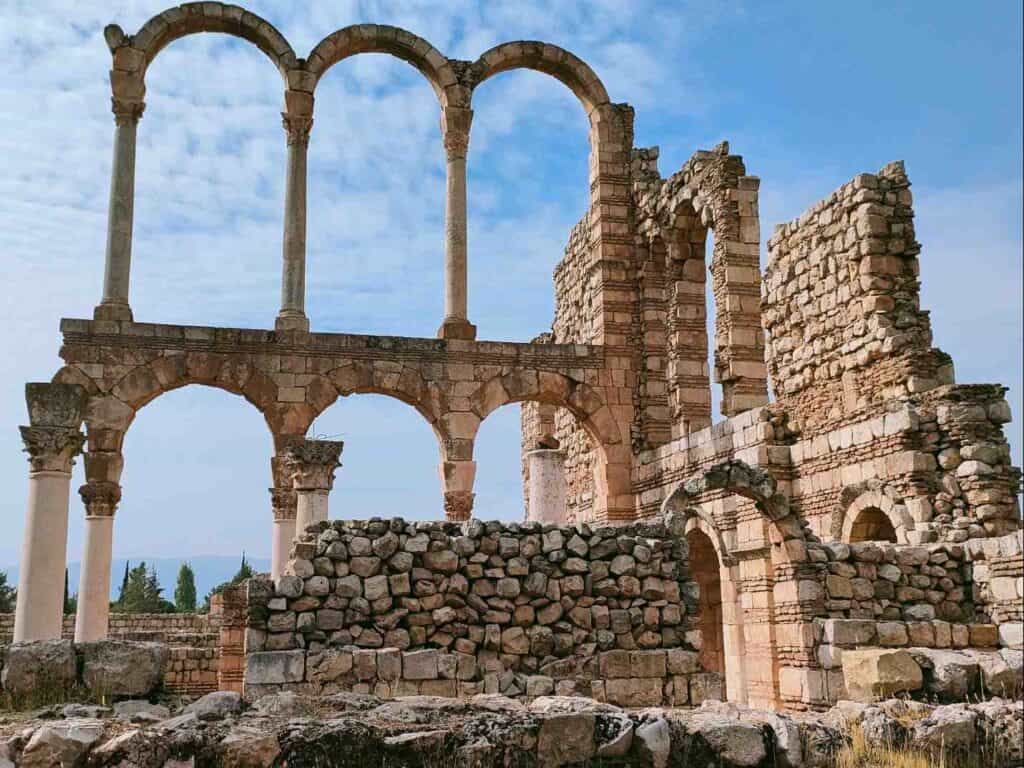
The Anjar ruins are overshadowed by the reputation of Baalbek, although it is almost as stunning as its counterpart. Plus, these are the ruins of a city from the 8th century when the Umayyad ruled the region inhabited only for 50 years. Anjar is a less-known place to visit in Lebanon and comes as a surprise.
The two most famous wineries of Lebanon are Ksara and Kefraya. Ksara is the oldest and most well known that has produced wine since 1857. It is unique for its underground caves where the wine matures. Ksara offers daily guided tours (price: LBP 40,000 and LBP 100,0000 depending on the selected wines), including winetasting. Call them to book your visit in advance (+961 8 813495). It is also possible to connect wine tasting with having lunch in their cozy brasserie.
Kefraya is the other famous winery in Lebanon and the largest wine producer in Lebanon. It also offers guided tours that start with a train ride to get to a viewpoint in the winery.
How to go to Zahlé/Baalbek?
Baalbek is easily reachable from the Cola station in Beirut, on the way you can get off in Zahlé.
Where to stay in Baalbek?
Hotel Shouman – located next to the ruins, extremely cheap and offers private rooms with a shared bathroom. It is very simple, good if you look for a place to stay for a night but expect little from that.
Palmyra hotel: Opposite the ruins, the most reputed hotel of Baalbek. The guest list includes prominent guests such as Charles de Gaulle. The hotel is not available on the online hotel reservation platforms, but you can still contact them to book a room.
Kanaan Hotel Group: The best low-budget option in Baalbek
Where to stay in Zahlé?
There is no accommodation available for booking on any online platform in Zahlé.
Hotel Akl – a budget hotel along Rue Brazil. Book directly on their website.
Hotel St. Jean – 3 star hotel close to the center
Hotel Monte Alberto – 3 star hotel located above Zahlé with a stunning view. A funicular takes the guests to the hotel that has a revolving restaurant as well.
Day 8 – Zahlé, Baalbek
Zahlé is a modern, bustling mountain resort, a favorite spot for Beirutis to escape from the summer heat and enjoy Lebanese cuisine in a restaurant along the Birdawni river. Zahlé’s population is mainly Greek Catholic in the Shiite Bekaa region.
Walk along the Rue Brazil to see some historic buildings from the Ottoman period.
Before you continue, read my article about how it is to visit Lebanon in the middle of the crisis
Zahlé was the scene of the infamous massacre in 1860 when Maronites were massacred at the hands of the Druze, first in Lebanon and then in Damascus, which prompted direct European military intervention. French troops landed in Beirut and thousands of Maronites fled to the city for protection, and almost half of the population immigrated to Brazil.
Strolling around the ruins of Baalbek is one of the highlights of your visit to Lebanon.
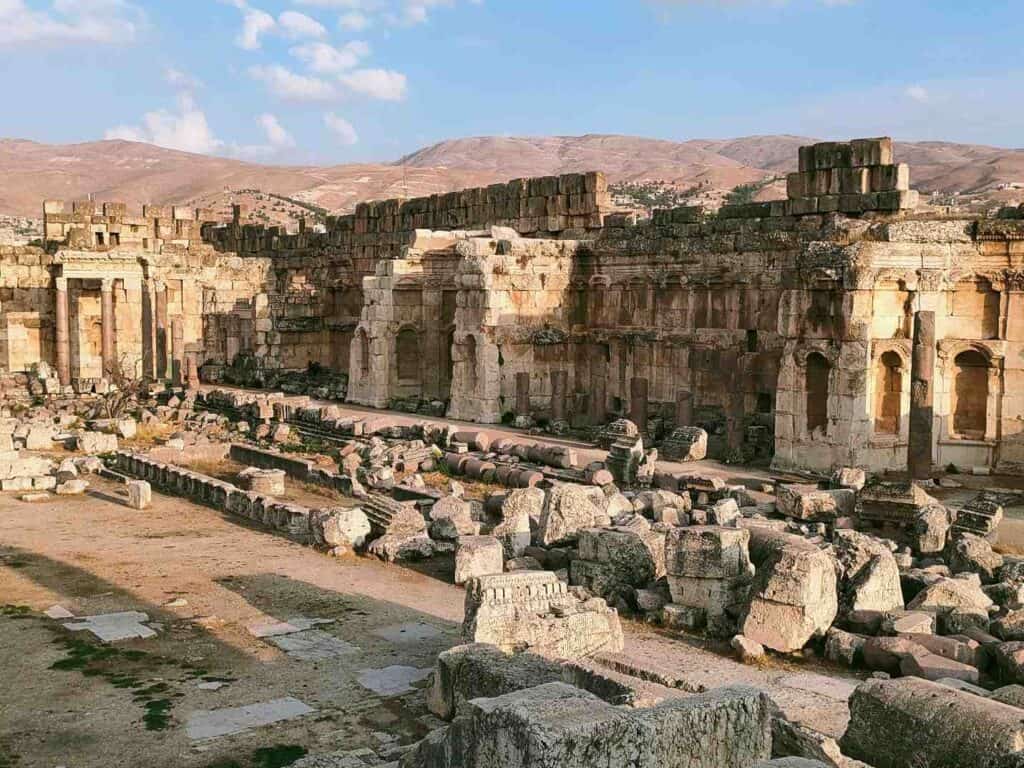
It stands on the highest point of the Beeka valley at 1150 meters. The entire Beeka valley is a plateau indeed. Baalbek is more conservative than Zahlé, so you have to dress up modestly. Only a few tourists make it to Baalbek nowadays, and you most probably only meet the military staff stationed in Lebanon or have the ruins for yourself.
During the 1st century BC, a temple dedicated to the god Baal was built, hence the name, the city of the Sun God. Baalbek was a principal place of worship in the entire Roman Empire, initially the center of pagan rites where animal and human sacrifice was a common way to honor the Gods. Ten thousand slaves worked on the construction for centuries.
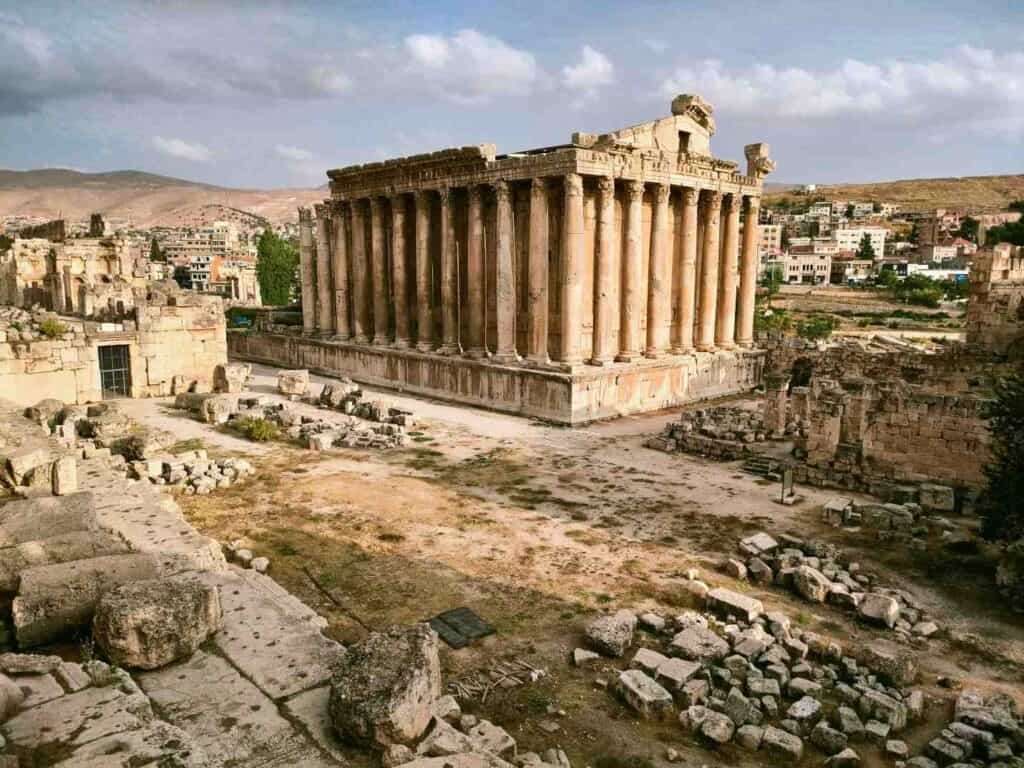
When the Roman rulers adopted Christianity, they forcibly converted the population to the Christian religion. They destroyed parts of the temple of Jupiter and deprived it of the images of Roman gods. Immense pillars were shipped to adorn the Aya Sophia in Constantinople.
The Arabs converted the complex into a military fortification.
The tallest columns ever constructed, the largest stone blocks ever used, and the boldest architectural engineering feat ever carried out by humans–these are some of the few things that make Baalbek one of the most outstanding temple complexes in the world.
Baalbek contains the ruins of three temples, the small temple of Venus and Bacchus and the principal temple of Jupiter-Baal with the forecourt and monumental staircase.
If you are in Lebanon during July and August, then visit the International Music Festival of Baalbek. It has a long tradition dating back to 1955 but was suspended during the civil war.
1 km south of Baalbek is the quarry from where the stones for the construction were delivered.
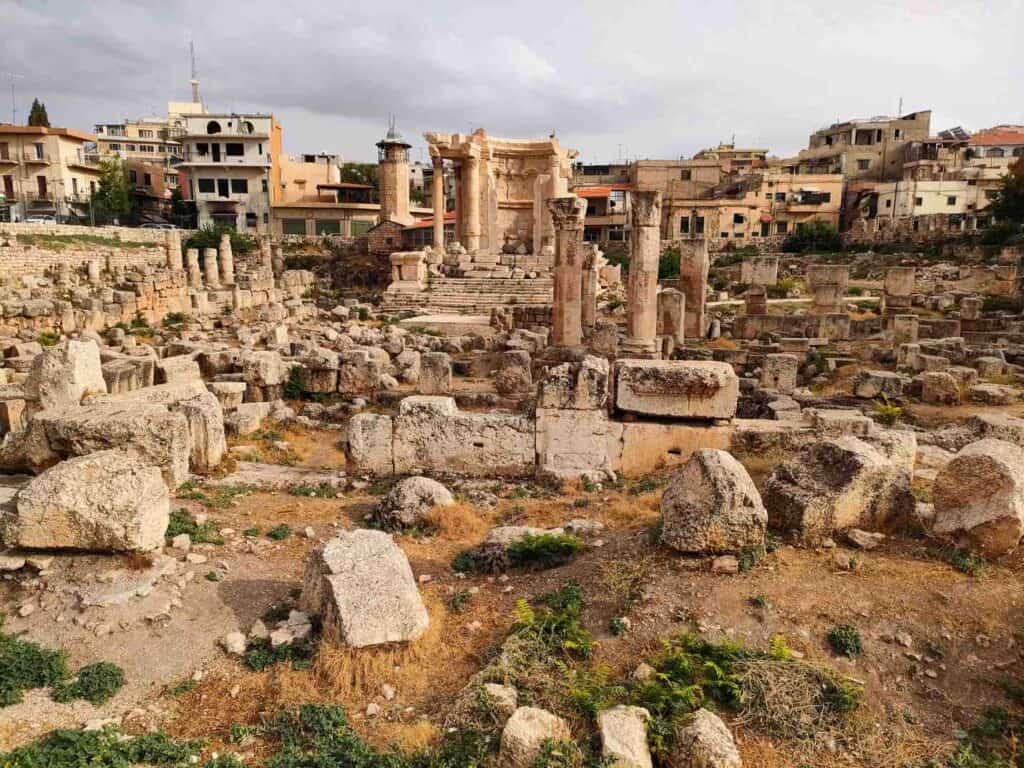
Take the time to stroll around the ruins of Baalbek, observe it from every angle, and check out the meticulously decorated capitals. If you have the chance, visit it before sunset when the stones change their colors.
Opening hours: 9-18:00. Admission fee: 15,000 LBP
Best time to visit: before sunset
Day 9 – Sidon, Temple of Echmoun, Magdouche
Head to the south to discover the two coastal cities, Sidon (Saida) and Tyre (Sur). Although distances are insignificant, the banana plantations surrounding the road make the landscape completely different. Unfortunately, Lebanon’s agriculture is scarce, and the country is suffering under the necessity to import almost everything in large quantities. The government focused almost entirely on the bank sector to the detriment of agriculture.
Sidon
Sidon is an authentic coastal town where you can wander around in the authentic oriental bazaar dotted with khans and mosques. The entire city is unspoiled with touristic facilities, and you get an Arab Mediterranean city’s feeling that was once the primary Phoenician trade center.
Sidon was a great victim of the Lebanese civil war, losing many inhabitants and suffering severe damages.
Being Rafiq Hariri, the former prime’s birthplace, it got outstanding support for the reconstruction. Despite Hariri’s assassination in 2005, the Foundation still supports health care, education, and restoration projects, mainly in Sidon.
The Sea Crusader Castle stands offshore on an island with massive walls and towers and a fantastic view if you climb the stairs.
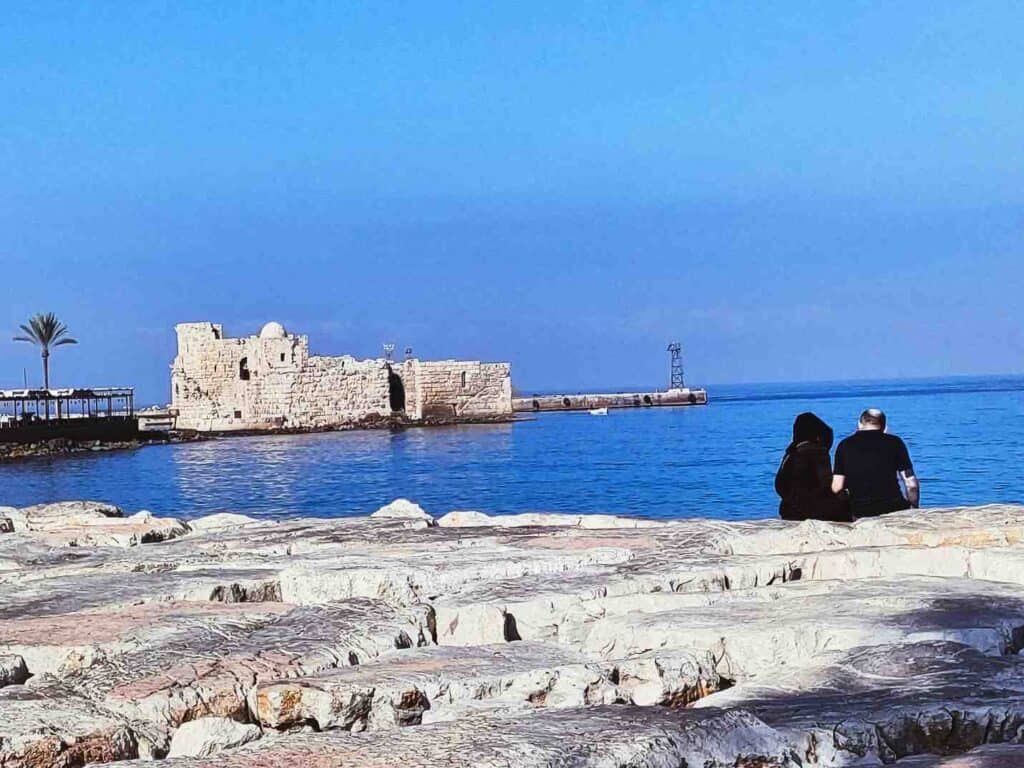
Opposite the Sea Castle stretched the souk with some points of interest not to miss. The Khan al-Franj served as accommodation for merchants and traders, with galleries and arcades running on two levels. The second floor hosts the French Institute, so you can only visit the ground floor. Thanks to the Hariri Foundation, the khan is in a perfect state.
The Great Mosque was built of the remnants of the Crusaders’ Church, using its elements, whereas the Bab al-Saray Mosque is the oldest, though most of the time closed to visitors.
Sidon’s bazaar with its narrow alleys and shops where you can even observe the craftsmen working is the highlight of your visit. Try some sweets and have a coffee in one of the pleasant places in the souk. I saw a group of men playing cards in a café chatting and smoking nargile. I love these daily scenes when you walk around and observe how people live their lives. It is much more memorable than visiting any attraction.
If you are interested, you can visit the famous Soap museum to learn more about the traditional soap-making procedure.
Echmoun temple ruins
Only a few kilometers from Sidon, the Phoenician ruins of temple Echmoun are nestled among the orchards; one of the temple complexes dedicated to the Phoenician God dates back to the 7th century. The ruins of a Byzantine church and mosaics, the Roman colonnade, remained an important pilgrimage site for a long time.
Magdouché
Visit the pilgrimage site of “our Lady of Mantara”, where the Virgin Mary was waiting for Jesus in a cave according to Christian belief. „Mantara” means Awaiting. The Greek Catholic Church transformed the Cave into a sanctuary.
How to get to Sidon?
Sidon is easily reachable with public transport from Beirut Cola station within an hour and costs 15 000 LBP. You get off at the big roundabout (again, not an official bus station), with the old city being within easy reach.
Where to sleep in Sidon?
Al Qualaa– stylish mid-range hotel in the old city
Yacoub guesthouse – mid-range guesthouse in the old city
Day 10 – (Mleeta), Beaufort castle, Tyre
On this day you can visit the controversial museum of Hezbollah, the Shia political party and military force in Mleeta. It is one of the unusual places to visit in Lebanon. its main mission is to show resistance against Israel. According to many Lebanese Hezbollah is one of the main problems of the country as supported by Iran and Syria they increase the country’s dependence on foreign powers. The Israeli and Syrian occupation that ended in 2000 and 2005 highly divided the politicians and the people and even led to political assassinations. Hezbollah claims that it only wants to protect the country from the acute threat of Israeli invasion, however, many locals think that they only provoke an attack from Israel.
Concerning the above, it may not be ethical to visit the museum. It is the most controversial place to visit in Lebanon.
I took a visit as I wanted to understand better the overly complex Lebanese political scene.
Note: during my stay in Beirut, Hezbollah and Amal, the two Shiite movements incited clashes at the Palace of Justice demanding the resignation of the leading judge, Tarek Bitar. He conducts the trial for the tragic Beirut explosion of 2020 that irreversibly pushed the country to the verge of collapse and people are desperately waiting for justice. Seven people died in the clashes between the Shia groups, unidentified gunmen and the Lebanese Army forces.
Beaufort castle
The castle has a stunning and strategic location on top of a 300 meter-high cliff surrounded by the Litani river. Besides having a nice coastal view from the castle, whole southern Lebanon and northern Israel can be both detected. So it comes as no surprise that it had a crucial role during the civil war. The PLO (Palestine Liberation Organization) occupied it and became the target for the Israeli army. The Israeli army took it over in the „Battle of the Beaufort” and used it for its military activities until the Israeli occupation ended in 2000.
Tyre
Continue to the most southern coastal city, Tyre to finish your day, which you will more often hear being called Sour in Arabic. It is a Shiite-dominated region like Bekaa valley that suffered extremely during the Israelian occupation and the civil war because of its proximity to the Israeli border. It gives the impression of a charming city again although recovery and renewal take time.
Israel’s attack in 2006 was another shock for Tyre.
The old city occupies a peninsula with a fishing port and a maze of quiet alleys. It is a great opportunity to have some fish or seafood in one of the fish restaurants.
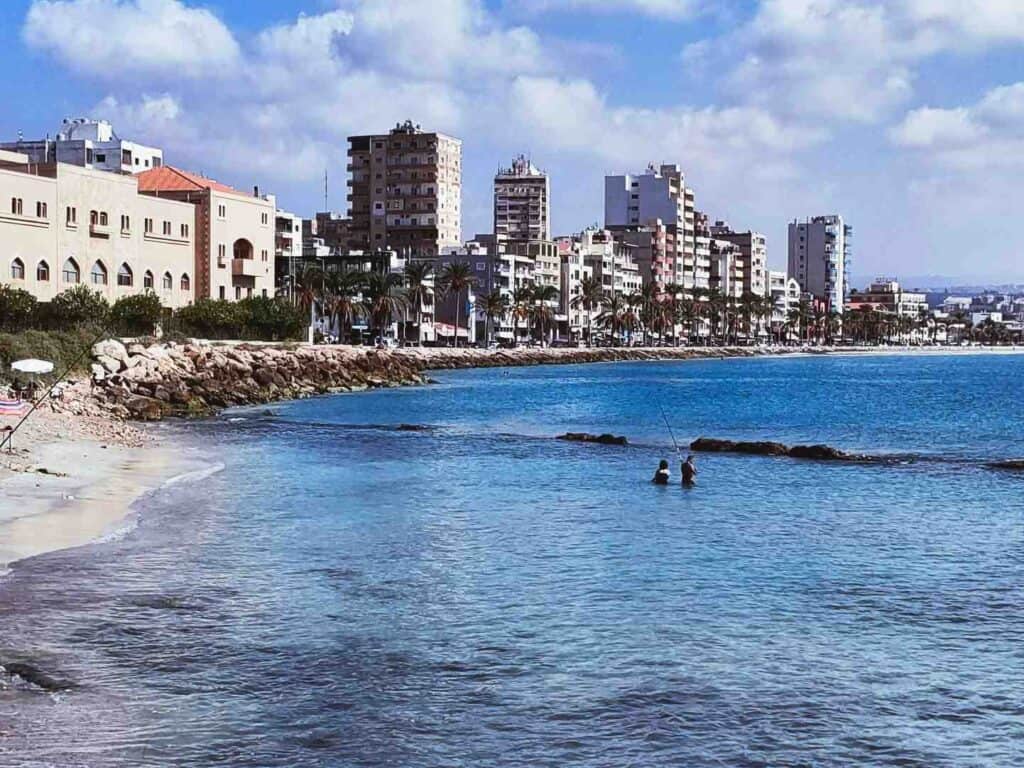
Tyre has two important archeological sites: Al-Mina and Al-Bass archeological Sites with the remains of Romane and Byzantine Tyre, both within walking distance. The latter one is even more impressive with the ruins of hippodrome, aqueduct and a funerary complex. From Al-mina archeological site you have a view of the beach, a perfect place to go swimming.
You can stay either in Tyre or return to Beirut.
How to go to Tyre?
Located along the coast you can easily find a bus from Cola bus station in Beirut that passes through Sidon and continues to Tyre. It costs 30-35 000 LBP.
Where to stay in Tyre (Sour)?
Tyre lacks low-budget destinations.
Dar Camelia – mid-range, it has a stylish interior with a perfect location in the center
Platinum hotel – mid-range close to city center
Useful Lebanon travel resources
Flights: Check the best flight offers on Skyscanner.
Car rental: It is easy to get from Beirut to the main cities along the coast (Tripoli, Byblos, Sidon, Tyre) or to Baalbek. However, public transportation to the countryside is often scarce. I highly recommend for you to rent a car when you discover the mountain region. Discover Cars offers great options to rent a car in Beirut.
Insurance: Safetywing is a cheap travel and medical insurance that also covers COVID-related issues.
Accomodation: Since not all hotels are listed on booking.com, I recommend checking out Hotellook that integrates other hotel platforms, thus proposing more options. It is especially useful when you look for accommodation in the countryside. Hostelworld is another good option for finding low-budget accommodation, but it only covers Beirut and Tripoli.
Local tours: You can reach almost every destination on a day-trip from Beirut.
Conclusion
The above 10-day itinerary contains a mix of natural and cultural travel attractions and enables you to discover the whole of Lebanon. You can extend your stay to rest on the beach and stroll around Beirut. There are plenty of things to do in Lebanon. Despite being a small country, you can even spend two weeks there.
I hope you found this extensive travel guide about Lebanon useful. Please leave a comment on that and tell me if you have questions about that.
Other articles about Lebanon
Travel to Lebanon during the economic crisis
A must-do local tour: Alternative tour Beirut
How to spend 2-3 days in Beirut
More articles about the Middle East
Jordan
The perfect Petra one and two-day itinerary in Petra
Visiting Jerash, Ajloun and Umm Qais
Jordan desert castles: a day trip from Amman
5, 7 and 10 day Jordan travel itineraries
Iran
What you can and cannot do in Iran
45 things you must know before traveling to Iran
The best books to read about Iran
The best 2-week itinerary in Iran (the classical route)
All you need to know about the Iranian currency
The best places to visit in Tehran (museums, palaces, religious sites)
The best things to do in Tehran
Travel guide to Tabriz, North Iran
Travel guide to Mashhad, the holy city of Iran
Best things to do in Lahijan, the city of tea in Iran
Best things to do in Ramsar at the Caspian Sea
Visit Varzaneh desert, Toudeshk, Mesr desert and Garmeh from Isfahan
45 tips before traveling to Iran
What is the dress code in Iran?
Iraq
All you need to know before traveling to Iraq
What to visit in Baghdad in 3-4 days
The best books to read about Iraq (constantly updated)
Visiting Lalish, the holy place of Yezidi people
Best places to visit in Iraq (+travel itinerary)

